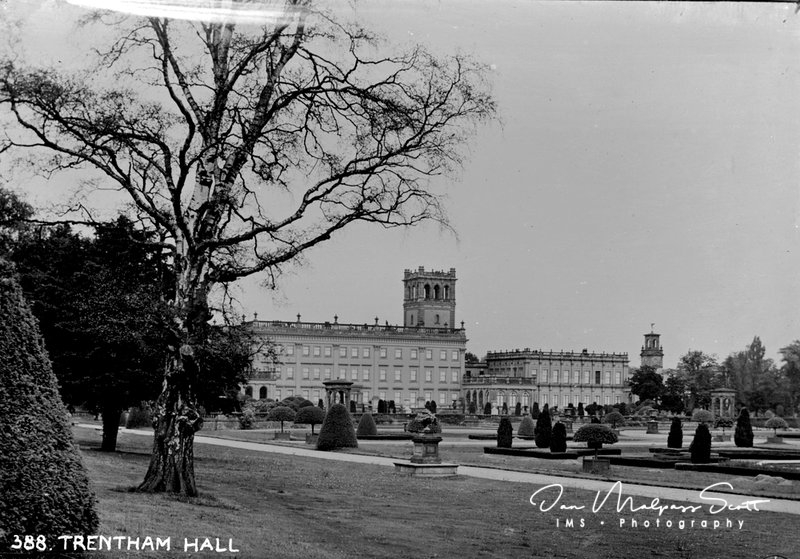Trentham Estate is located near the village of Trentham, A visitor attraction in Stoke-on-Trent in Staffordshire, United Kingdom, the site is located on the southern fringe of the city of Stoke-on-Trent, within the Borough of Stafford.
The property was sold in 1540 to James Leveson, a Wolverhampton wool merchant. The Leveson family occupied the property and Sir Richard Leveson built a new house in 1634. The Leveson heiress Frances married Sir Thomas Gower Bt leading to the creation of the Leveson Gower family. It was a large Elizabethan house, which was probably demolished to make way for a later Georgian house. Their son Sir William Leveson Gower built a new house on the site in 1690.
Around 1730 a hall was erected based on Buckingham House. It was substantially altered by the first Marquess of Stafford, from designs by Henry Holland, in 1775–78.
The country house of which parts remain dates from 1833–42, and was designed by Charles Barry, while he was working on the rebuild of the Palace of Westminster. He was commissioned by George Granville Leveson Gower, Duke of Sutherland. The focal point of the building was a 100 feet (30 m) square campanile clock tower. The original approach to the hall was from the west, and an Italianate Grand Entrance was part of the western front. The one-story arcade range is semi-circular with side wings. It was made of plastered brick and ashlar, and had unfluted Ionic columns each side of its bays, as well as a balustrade above the cornice. The centre has a three-arched entrance with porte-cochére projects, and a coat of arms is carved above. The right wing incorporates an orangary that was originally built in 1808 by Heathcote Tatham. Barry spent over 10 years improving the house, as well as adding a new block including state bedrooms and dressing rooms, as well as servant’s quartes, a sculpture gallery, and a clock tower.
In 1851 it was described as being an “elegant mansion”. It had been completely rebuilt in the previous 14 years, and had a stone front. It housed an extensive collection of paintings.
It is surrounded by an 18th/19th century park designed by Lancelot Brown. The house served as the Staffordshire seat of the Duke of Sutherland, whose traditional burial place was Trentham Mausoleum nearby.
Demolition
The Hall was one of many to be demolished in the 20th century, and was one of the greatest losses of the era. The Trent River had been diverted into a lake close to the hall, but sewage from nearby potteries polluted it in the early 20th century.
It was offered for free to the local council in 1905, but it was abandoned by 1907. The hall was demolished in 1912-13 by its owner, the 4th Duke of Sutherland, who razed it after his offer to give it to the people of Stoke-on-Trent was rejected. However, the gardens and the ornamental park with its lake and the Estate woodlands have all been preserved.
The sculpture gallery, clock tower and parish church, as well as other buildings, were not demolished.


